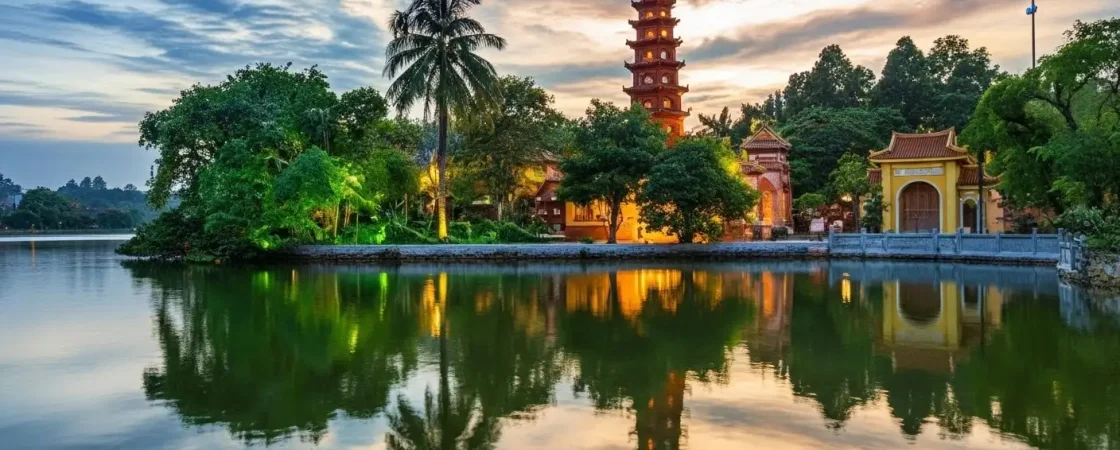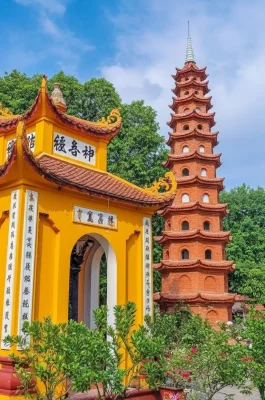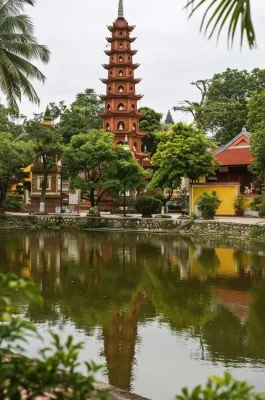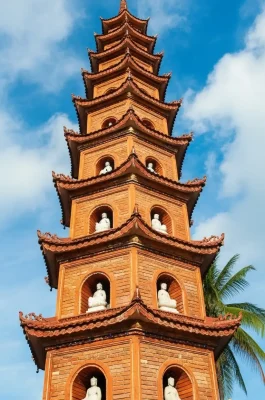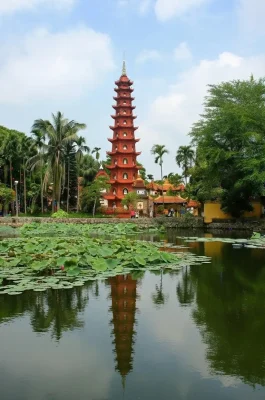Trấn Quốc Pagoda is widely regarded as the oldest Buddhist temple in Hanoi, boasting a history spanning over 1,500 years. Its beautiful setting on a small island connected to the causeway between West Lake and Trúc Bạch Lake makes it one of the capital’s most photogenic and tranquil spiritual sites.
I. History & Spiritual Significance
Ancient Origins: The pagoda was originally built in 541 during the reign of Emperor Lý Nam Đế and was initially named Khai Quốc Pagoda (National Founding Pagoda). It was originally located on the banks of the Red River but was relocated to its current, more stable position on Kim Ngưu islet in 1615 due to riverbank erosion.
Name Meaning: The name was changed to Trấn Quốc Pagoda during the Lê Hy Tông Dynasty (1681–1705). “Trấn Quốc” means “Guardian of the Nation,” reflecting the spiritual role the temple was believed to play in protecting the country and ensuring a peaceful life for its people.
A Center of Buddhism: Throughout the Lý and Trần dynasties, the pagoda served as the capital’s center of Buddhism, often visited by Kings and royalty to pray for national prosperity.
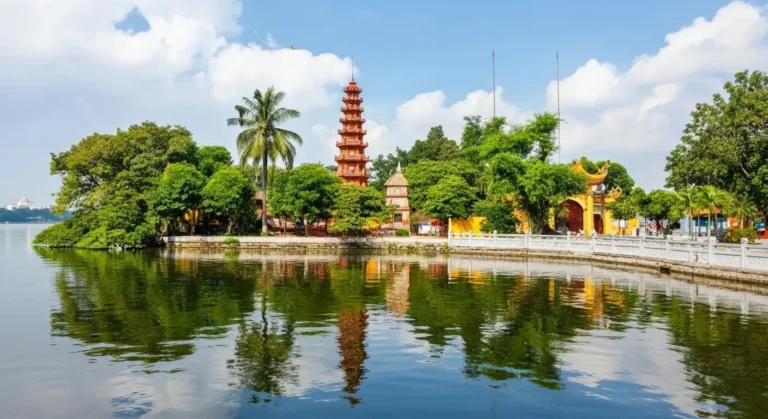
II. Architecture and Highlights
The pagoda’s architecture follows traditional Vietnamese Buddhist design principles, blending symmetry and serenity.
Bảo Tháp (11-Story Stupa): The most recognizable feature is the stunning Bảo Tháp Lục Độ Đài Sen, an 11-story, red-brick stupa built in 1998. Each level features a vaulted doorway housing an Amitabha Buddha statue, and the spire is topped with a decorative nine-story lotus (Cửu phẩm liên hoa).
Bodhi Tree: A sacred Bodhi tree stands in the courtyard. It was grown from a cutting taken from the original tree in India where Siddhartha Gautama attained enlightenment. This cutting was gifted to the pagoda by Indian President Rajendra Prasad in 1959.
Tien Duong (Front House): This building serves as the main worship hall and is beautifully decorated with intricate wood carvings and lacquer work.
III. Practical Visitor Information
Best Time to Visit:
Peaceful Experience: Early morning (around 7:30 AM) on a weekday is best to avoid crowds and experience a contemplative atmosphere.
Festive Experience: The pagoda is busiest and most vibrant on the 1st and 15th days of the lunar month and during the Tết (Lunar New Year) holiday, when local worshippers gather.
Photography: The late afternoon offers a stunning view of the pagoda silhouetted against the sunset over West Lake.
| Detail | Information |
|---|---|
| Location | Thanh Niên Road, Yên Phụ Ward, Tây Hồ District, Hanoi. (Located on an islet on West Lake). |
| Opening Hours | Generally 8:00 AM – 4:00 PM daily. Extended hours on the 1st and 15th lunar days (often 6:00 AM–6:00 PM). |
| Entrance Fee | Free of Charge. |
| Recommended Duration | 30 to 60 minutes. |
| Dress Code | Strictly enforced modest attire is required. Shoulders, chest, and knees must be covered (no shorts, mini-skirts, or tank tops). |
| Contact | (General visitor phone numbers for the pagoda are not widely published; use local travel agencies for immediate needs.) |
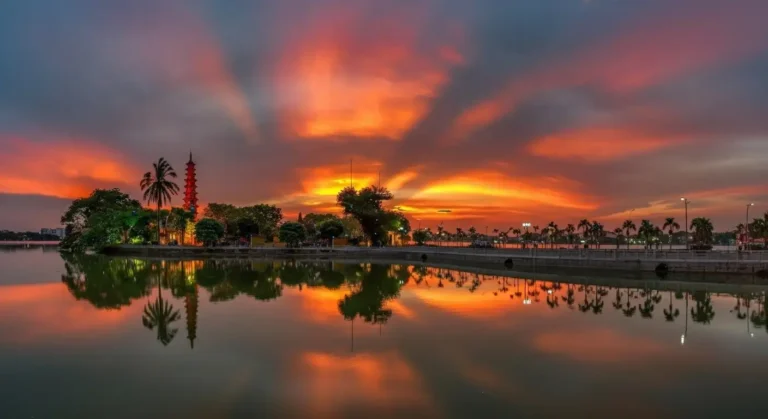
IV. Travel Tips & Nearby Attractions
Transportation: The pagoda is approximately 4 to 5 km from the Old Quarter. A short taxi or Grab ride is the most convenient option. Bus route No. 50 stops directly at the entrance.
Nearby Sights: The pagoda is located close to Quán Thánh Temple, one of the Four Sacred Temples of ancient Hanoi, and is a pleasant walk or bike ride along the causeway that separates West Lake from Trúc Bạch Lake.
